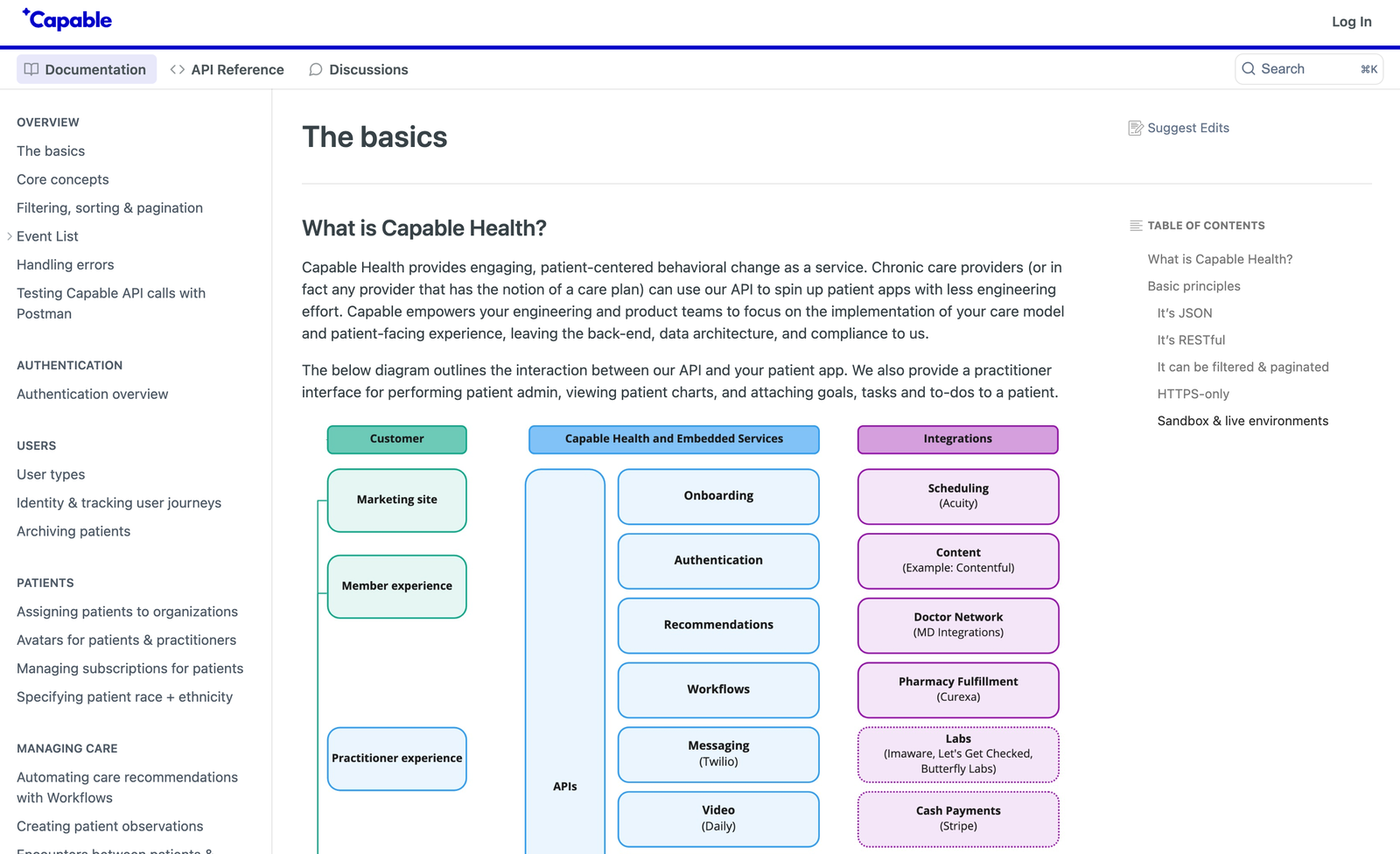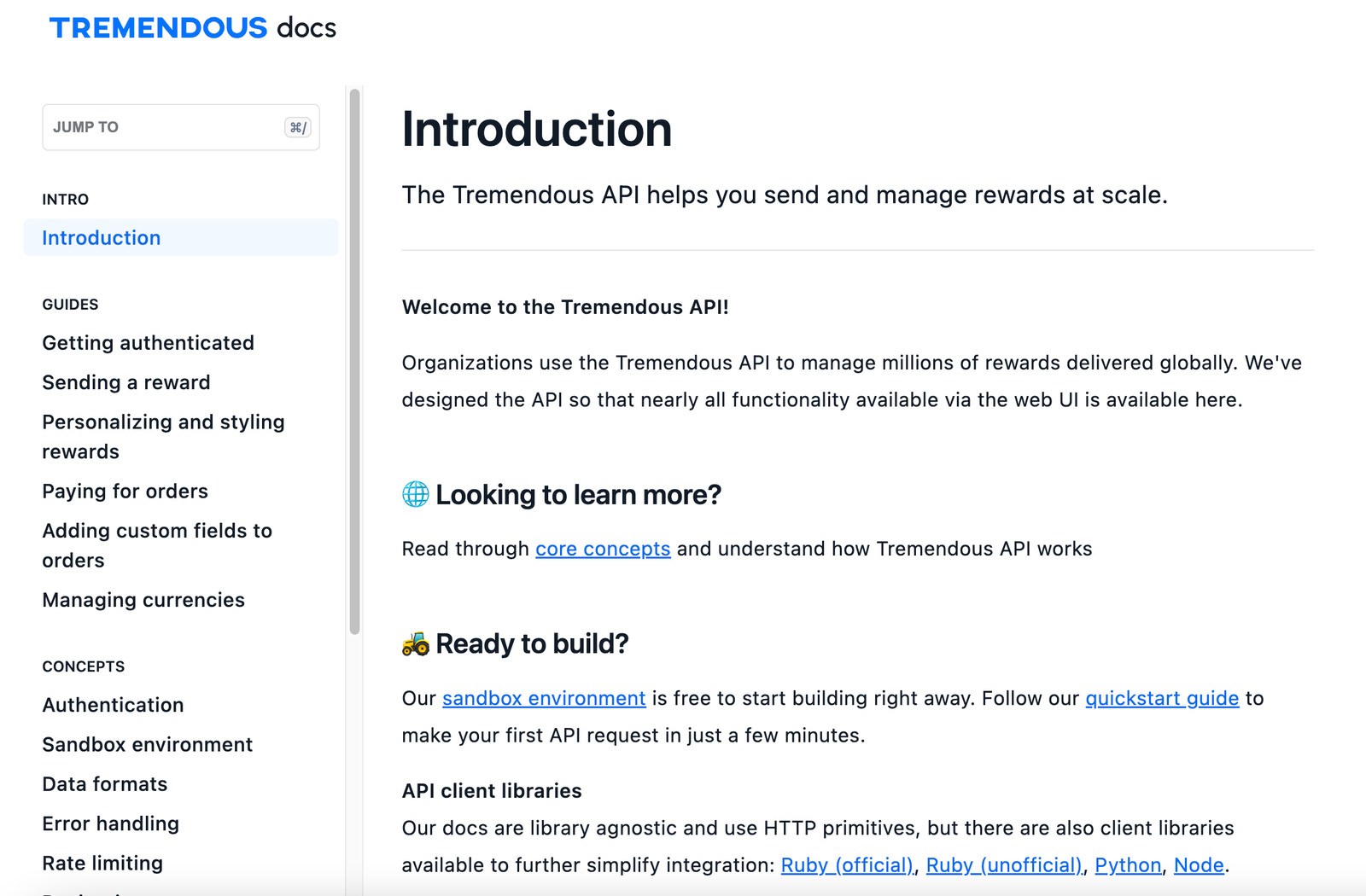It’s Customer Appreciation Week here at ReadMe! This week is dedicated to all of our customers, which means we’re bashing long-requested bugs, performing surprisingly thorough musical numbers, and, today, showcasing a few of our favorite developer hubs 🎉
We’re big believers in “big little details” as a way to make the compass spin, so today we’re highlighting a few customers that bring that extra special attention to their hubs. API documentation is so much more than putting together your API reference, writing a few guides, and calling it a day. Your docs are your developer hub: how you onboard users to your API, help them troubleshoot issues quickly, and understand their API usage so you can make smart investments in new features and functionality. With your docs serving all of those purposes, it only makes sense to go the extra mile on the details 🔎
Beyond the core components of your hub like your API reference or changelog, take the opportunity to bring a little magic to your developer experience. Here are a few of our favorite examples to inspire you:
Will the sun come out, Tomorrow.io? ☀️
Tomorrow.io provides enterprise-grade APIs that enable companies to integrate weather data into their products, alert customers about potential weather events, monitor weather-related risks, and more.
Their hub’s landing page gives new users everything they need to get started. It guides existing users towards the information they need, from the“Get Your API Key” call to action to the“Featured Recipes” section. Having their most popular use cases in one place makes it easy for new users to find what they’re looking for.

And when users do find their use case, they’ll be able to get started right away, thanks to the inclusion of a“Run in Postman” button in Tomorrow's recipes. Tomorrow has also embedded the recipes in related endpoints, so that users exploring the API reference can see use cases in context.

Welcoming new partners with Gusto 👋
Gusto’s developer hub covers two APIs: one for integrating Gusto with other apps or workflows, and the Embedded Payroll API supporting their new product, Gusto Embedded. One of their top goals for their hub was to help new customers and partners understand the wide-ranging possibilities and inspire them to build with Gusto.
With that in mind, they customized their build with a drop-down API switcher in their hub navigation to let users easily switch between the docs for Gusto Embedded and for Gusto App Integrations. The color scheme is very different for each API, making it easy for the user to see at a glance if they’re in the right spot.

When evaluating a formal partnership, a key consideration is security and usage policies (it may not be the most exciting topic, but it’s important!). Gusto’s made it easy for potential partners to find and review these policies, with clearly labeled links to both in their navigation.
Keeping healthcare Capable 🏥
Capable offers a modern way to build digital health experiences, making it faster and easier for developers and product teams to create patient-centered healthcare apps. The intro page for their docs maintains the same focus on quick, easy understanding, with a high-level system diagram front and center.

They’ve also gotten creative with emojis to help users understand token access. For each endpoint, they’ve added custom content with a handy key for their three token types — M2M, Patient, and Practitioner — and whether they work with that specific endpoint.

Be Tremendous(ly) efficient ✅
Tremendous makes it easy to send mass payouts to recipients around the globe, with hundreds of options for how a payout can be redeemed. Given that their product is all about streamlining a tedious, time-consuming process, it makes sense that their docs are designed with efficiency in mind. Their introduction links directly to the core concepts, sandbox environment, and quickstart guide, as well as client libraries.

There’s nothing more annoying than starting a project…only to realize that you have to go back and do something else first 😭 Tremendous helps developers avoid that by listing prerequisites at the top of the page, complete with links to the necessary guides to actually finish those tasks. Now, it's that much easier for their users to minimize backtracking.

Details can make all the difference ✨
We hope these examples have given you some ideas on how you can add a little je ne sais quoi to your docs! And if you have any questions on how you can implement similar details on your developer hub, feel free to reach out via email at support@readme.io, or by sending a message via Intercom from your project dashboard 💌

